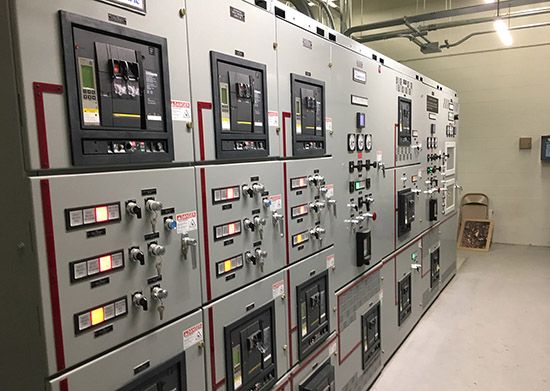|
Subscribe / Renew |
|
|
Contact Us |
|
| ► Subscribe to our Free Weekly Newsletter | |
| home | Welcome, sign in or click here to subscribe. | login |
Construction
| |
 |
January 22, 2018
Best in State: Gold Award
Complexity
Stantec

Project: Kadlec Regional Medical Center Utility Plant
Client: Kadlec Regional Medical Center, Davis Partnership
Performing electrical work at a medical center providing critical care is always a difficult task. Stantec faced particularly unique challenges during the equipment upgrades and replacements at Kadlec Medical Center’s utility plant, requiring the electrical engineer to come up with innovative solutions in order to meet the owner’s needs.
The Richland medical center’s expansion from a six-story building to a 10-story building meant the central utility plant would have to grow as well. However, the medical center is on a site that is landlocked by natural topography, allowing no options to add physical space to the plant building or build a new facility.
Working with Davis Partnership architects, Stantec’s engineers were challenged to devise a new and complex plan to replace two generators, the paralleling switchgear and transfer switches in extremely tight conditions, and in the exact same spaces as the existing equipment.
The next challenge: how to keep the power flowing during construction for the critical lifesaving functions of the medical center, which operates 24/7. Since shutting the power down was not an option, the engineers designed an intricate plan that included using a “leapfrog” methodology and extraordinary coordination efforts to get the job done.
Engineers had to put the entire hospital’s essential system load onto a single generator while replacing the other generator and portions of the paralleling switchgear. To accomplish this complex task, electrical engineers developed a phasing plan based on the electrical loads supported by the current transfer switches and the available physical space to add new paralleling gear sections.
When the new gear was brought in and butted up against the old switchgear lineup, the loads were connected to the new equipment, starting the process of eliminating the old switchgear sections. Next, selected distribution sections on the outgoing gear were removed, freeing up space at the end of the new switchgear, which allowed for new sections to be installed and connected.
This “leapfrog” methodology was followed to the point where the building’s essential load could be connected to the new paralleling switchgear and new generator, which allowed for the second generator to be removed and replaced.
The result was the successful completion of a complex engineering scheme, a precisely choreographed dance of equipment replacement and cutovers, and a power supply that is robust and flexible for the expanded building well into the future.
Making way for new equipment in already cramped spaces was another challenge. The space between the switchgear and transfer switches was only 4 feet, requiring considerable planning, fieldwork and contractor coordination to remove and replace the critical equipment.
Critical power cutovers followed detailed work plans with back-out procedures identified in the event of unforeseen issues. Coordination meetings were held to identify potential impacts with each department so they could be addressed prior to the cutover, and the team walked through the process with the contractor, Bouten Construction, prior to construction.
The project was completed on time, within budget, and with change orders that equaled less than 1 percent.
Other Stories:
- National finalist: Platinum Award
Structural Systems
Magnusson Klemencic Associates - National finalist: Gold award
Structural Systems
COWI North America - National finalist: Gold award
Special Projects
Hart Crowser - National finalist: Gold award
Special Projects
Parsons - Best in State: Gold Award
Successful Fulfillment of Client/Owner Needs
GeoEngineers - Best in State: Gold Award
Unique or Innovative Applications
Golder Associates - Best in State: Gold Award
Social, Economic and Sustainable Design
J-U-B Engineers - Best in State: Gold Award
Future Value to Engineering Profession
MIG/SvR - Engineer of the Year


